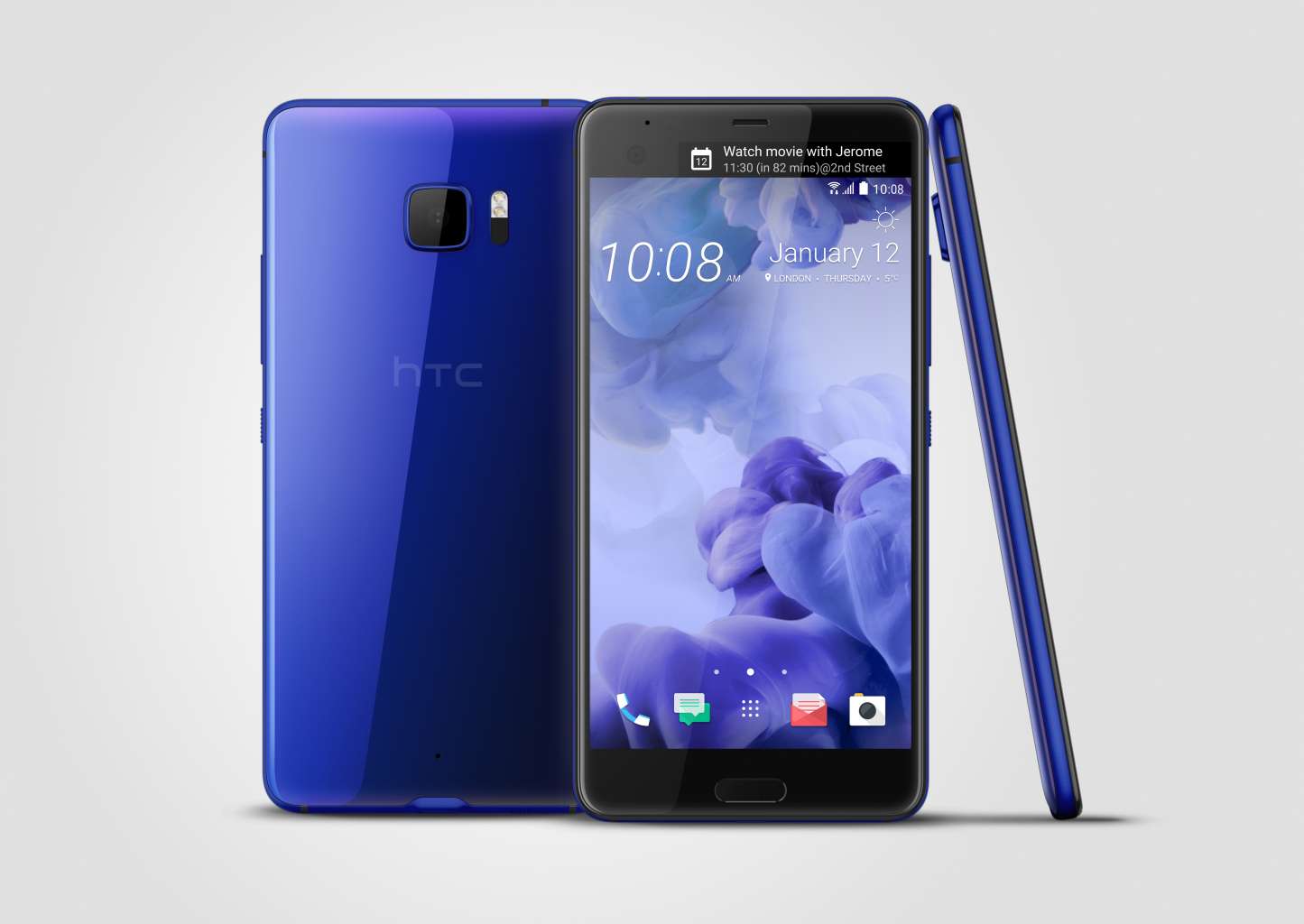HTC U Ultra not quite up to the mark
Sign up now: Get ST's newsletters delivered to your inbox

The phone feels large and unwieldy compared to rivals that have narrower designs that are easy to hold and use with one hand.
PHOTO: HTC
Vincent Chang
Follow topic:
If the HTC U Ultra had come out a year ago, it could have been a very decent phablet. But set amongst the competition now, it misses the mark because of some questionable design choices.
It also does not make a good first impression. The phone feels large and unwieldy compared to rivals that have narrower designs that are easy to hold and use with one hand.
Exacerbating the issue is the front fingerprint sensor, which is placed too close to the bottom edge. Hence, it is difficult to press the sensor - which also doubles as the Home button - with my thumb when I am trying to use the phone with one hand.
The Ultra's glass back though is an absolute stunner. My review set was a gorgeous sapphire blue, though its mirrored finish also makes it a fingerprint magnet. To retain its pristine looks, I'd advise placing the Ultra immediately into the bundled protective case.
Despite its glass back design being conducive to wireless charging, the Ultra lacks this feature. It also does not have IP68 resistance against water and dust. These two omissions put the phone at a disadvantage against its peers.
Like the LG V20, the U Ultra has a 2-inch secondary display above its primary 5.7-inch screen. This extra screen provides quick access to settings, like Wi-Fi, and apps like the alarm and calendar.
Unfortunately, its implementation falls short. For instance, it can be used to control music playback, but it works only with Google Play Music and Spotify apps.
The secondary screen comes on when you get a notification, lift the phone up, or when you double-tap it. But I prefer the always-on displays on the LG G6 or the Samsung Galaxy S7 series that show the time and other useful information without prompting.
The Ultra uses USB Type-C audio instead of having a traditional headphone jack. USB audio lets HTC perform some audio wizardry with its bundled USonic in-ear headphones. They come with a sonar feature that maps your ears and optimises the audio frequencies for each individual. To my annoyance, HTC does not include an adapter for normal headphones. Instead, it costs US$12 (S$16) to buy one from the company.
With its huge camera bulge, I had expected a better rear camera than the 12-megapixel shooter on the Ultra. It is competent enough, with optical image stabilisation and a laser autofocus. But it feels a bit slow at focusing and taking photos, especially in low light conditions. My photos generally look all right, but the colours do not quite pop, and on a few occasions, they even look inaccurate.
Unlike some phones, the front 16-megapixel camera has no special features to make it easier to take selfies, except for a short countdown timer.
-
TECH SPECS
PRICE: $898
PROCESSOR: Qualcomm Snapdragon 821 (Quad-core 2.15GHz)
DISPLAY: 5.7-inch, Quad HD, 2,560 x 1,440 pixels, 513 ppi pixel density
OPERATING SYSTEM: Android 7.0
MEMORY: 64GB, 4GB RAM
CAMERA: 12MP, f1.8 (rear); 16MP (front)
BATTERY: Non-removable 3,000mAh
RATING
FEATURES: 3/5
DESIGN: 3/5
PERFORMANCE: 4/5
VALUE FOR MONEY: 2/5
BATTERY LIFE: 3/5
OVERALL: 3/5
To its credit, HTC has kept its Sense UI interface, based on the Android 7.0 Nougat mobile operating system - it is clean with little bloat. The phone uses the default Google apps wherever possible instead of duplicating them with proprietary versions.
HTC did introduce its own AI assistant called Sense Companion. This assistant is supposed to learn from your usage and behaviour, but despite using it for over a week, I have yet to get any suggestions. I suggest sticking to the Google Assistant that comes preloaded in Nougat.
While it does not have the best processor available now, the Qualcomm Snapdragon 821 chip in the Ultra feels snappy enough. The handset has 64GB of internal storage, which can be supplemented with a microSD card (up to 2TB).
Battery life is mediocre, which is unsurprising given its relatively modest 3,000mAh battery. The Ultra will probably last a day of moderate usage. I usually had to charge it by evening with the battery gauge at around 20 to 30 per cent.
At $898, the Ultra is not as expensive as flagship Android phones that usually cost $1,000 or more. But while its glass back is eye-catching, the phone does not perform much better than cheaper handsets from Chinese competitors.
Verdict: The HTC U Ultra is good-looking but it lacks the features and performance to match flagship models. Yet, it feels overpriced against the next tier of handsets.

